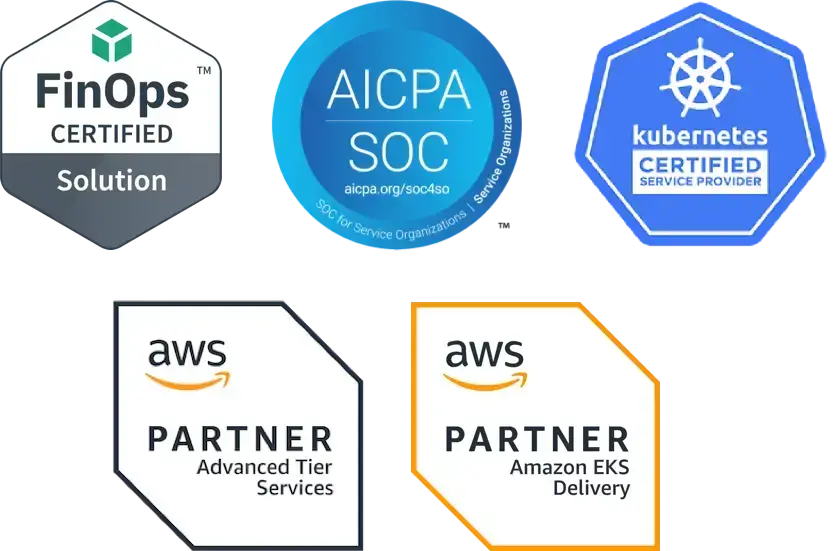- Managed Kubernetes
-
Use Cases
- AI-Ready Infrastructure Kubernetes optimized for AI and ML workloads.
- Architecture-as-a-Service Expert-designed Kubernetes architectures on demand.
- Chaos Days Test and improve resilience with controlled chaos.
- Supporting 3rd Party Apps Ensure stability for tools running on Kubernetes.
- Add-on Management Fairwinds handles your time-consuming K8s add-on upgrades.
- Software
- About
- Resources
Case Study
|


Framebridge

The Problem
Challenges with a static workload
Coping with fluctuations in scale and traffic
Positioning for growth
Fairwinds Solution
Fairwinds Managed Kubernetes
Allowed engineering resources to concentrate on Framebridge’s growth
Enabled the creation of an internal POS system to improve order fulfillment and accelerate time to delivery
Overview
Fairwinds' people-led Kubernetes Managed Services was able to help Framebridge fix problems with their Kubernetes workloads.
Framebridge Disrupts Business; Operations Need To Keep Pace
For Framebridge, it all started with a vacation. Founder Susan Tynan took a trip with her sister through the National Park System and came home with four posters, suitable for framing. They were not, however, suitable for her taste or budget at the time. She grudgingly paid $1,600 for the set of four clunky metal frames and the idea for Framebridge was born in 2014.
Fast forward to 2019 and Framebridge revolutionized custom framing. The company expanded into headquarters in Washington, D.C. and operates a state-of-the-art manufacturing facility in Richmond, Kentucky. It created a new vision for the framing experience that frustrated Tynan by offering high-quality, affordable, and fast custom framing direct to consumer through its website and app.
The company is now focused on expansion, customer service improvement, and continuing to make quality custom framing easier and more accessible. It even migrated from its eCommerce-only roots to open two retail locations, one in D.C. and one in Bethesda, Maryland. Its consumer targets: One-third of Framebridge customers are custom framing for the very first time, and 50% of the company’s customers are millennials. Framebridge customers indicated that 65% of the items they framed with Framebridge are things they would not have taken to a traditional custom framer.
With this kind of growth, engineering and operations faced new challenges...
Static Workloads and Dynamic Business Growth
The goal of Framebridge is customized framing. And as the company started to grow and accommodate spikes from Christmas selling season, the engineering team was battling with constrained resources and a deployment process that was almost as varied as its product offerings. This resulted in two problems.
The first problem was that these bespoke deployment processes resulted in a static workload when flexibility was necessary. This manifested itself in the business in occasional node failure that sometimes led to a scaling event. When applications were needed, they could not be relied on. When web traffic spiked, the nodes would sometimes fail, stressing an already stressed engineering team. Developers were needed to test and create new products. Problems in the operating systems were not enabling that empowerment.
The second problem related to fluctuations in scale and traffic. Bottom line, Framebridge was focused on growth. That meant more products, more price points, more customers, more shipping, and more pressure on engineers. Framebridge engineers were also tasked with perhaps the ultimate challenge: retail locations. In addition to scaling the core eCommerce business, it was building point of sale (POS) systems and applications for two retail locations.
Kubernetes Supplemented by Deployment Workflows
Framebridge had adopted container software and Kubernetes orchestration to help servers handle workload spikes. However, when they engaged Fairwinds in 2018, their Kubernetes environment was not working reliably. They didn't need a wholesale change to their infrastructure, however, the Fairwinds team identified two main solutions to deliver:
1: Build out separate infrastructures and clusters for workflow and products. In this way, the team could separate consumer traffic from workflow deployments, which then freed engineering resources to concentrate on Framebridge’s growth.
2: Create an internal POS system for both eCommerce orders and for the brick-and-mortar stores under construction. This improved order fulfillment and created faster time to delivery for consumers.
Cleaner Infrastructure; Empowered Engineers
The Fairwinds and Framebridge teams achieved the following improvements:
Better Infrastructure Monitoring: Because of the server loads and unreliable node firing, Framebridge’s IOPS was being throttled. This happens when the instance operating system merges sequential I/Os and counts them in 1,024 KiB-sized units. If the workload uses small or random I/Os, it experiences a lower throughput. That caused Framebridge to hit the volume's IOPS limit sooner than expected. Without the monitoring, performance issues would have ensued. A change in code helped alleviate this problem.
Focused Engineering Team: A week after initially engaging Fairwinds for Managed Kubernetes Services, the engineering team was testing new products, changing applications, and creating new products.
Pipeline Creation: Continuous integration and deployment in conjunction with the Fairwinds team helped in-house engineers prepare for and execute the brick-and-mortar location openings.
Continued Collaboration: The Fairwinds team continues to respond Framebridge's testing and support needs.
What Framebridge Is Saying
"We have had a seamless engagement with Fairwinds. They have helped us transform from five-year old technology to cutting edge performance, gaining safety and developer productivity in the process."
Brock Wilcox, VP Engineering


